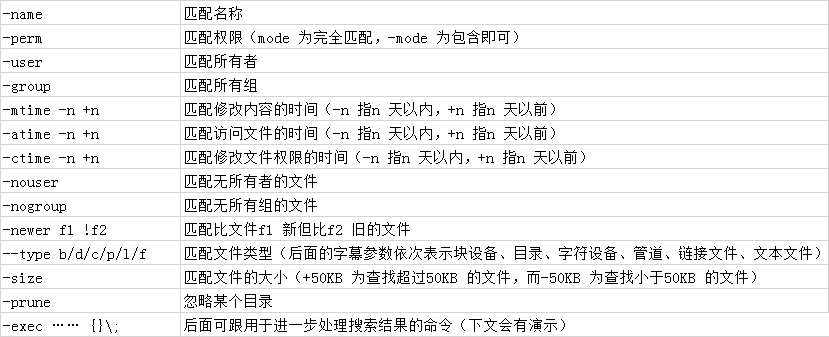1.touch:用于创建空白文件或设置文件的时间

举例:使用ls 命令查看一个文件的修改时间,然后修改这个文件,最后再通过touch命令把修改后的文件时间设置成修改之前的时间(很多黑客就是这样做的):
[root@Centos test]# ll total 8 -rw-r--r--. 1 root root 91 Aug 4 14:53 A.txt -rw-r--r--. 1 root root 84 Aug 4 14:53 B.txt
[root@Centos test]# echo You can you up, no can no bebe>> A.txt [root@Centos test]# ll total 8 -rw-r--r--. 1 root root 122 Aug 4 16:36 A.txt -rw-r--r--. 1 root root 84 Aug 4 14:53 B.txt
[root@Centos test]# touch -d 14:53 A.txt [root@Centos test]# ll total 8 -rw-r--r--. 1 root root 122 Aug 4 14:53 A.txt -rw-r--r--. 1 root root 84 Aug 4 14:53 B.txt
注:用stat代替ll发现touch命令只能修改access time 和 modify time,而不能修改change time。
2.mkdir:用于创建空白的目录。
结合-p 参数来递归创建出具有嵌套叠层关系的文件目录。
[root@Centos test]# mkdir xinghen1216 [root@Centos test]# ll total 8 -rw-r--r--. 1 root root 122 Aug 4 14:53 A.txt -rw-r--r--. 1 root root 84 Aug 4 14:53 B.txt drwxr-xr-x. 2 root root 6 Aug 4 16:46 xinghen1216
[root@Centos test]# mkdir -p a/b/c [root@Centos test]# ll total 8 drwxr-xr-x. 3 root root 15 Aug 4 16:47 a -rw-r--r--. 1 root root 122 Aug 4 14:53 A.txt -rw-r--r--. 1 root root 84 Aug 4 14:53 B.txt drwxr-xr-x. 2 root root 6 Aug 4 16:46 xinghen1216 [root@Centos test]# cd a [root@Centos a]# ll total 0 drwxr-xr-x. 3 root root 15 Aug 4 16:47 b [root@Centos a]# cd b [root@Centos b]# ll total 0 drwxr-xr-x. 2 root root 6 Aug 4 16:47 c [root@Centos b]# cd c [root@Centos c]# ll total 0
3.cp:复制文件或目录。格式为“cp [选项] 源文件 目标文件”
1)如果目标文件是目录,则会把源文件复制到该目录中;
2)如果目标文件也是普通文件,则会询问是否要覆盖它;
3)如果目标文件不存在,则执行正常的复制操作。

[root@Centos test]# cp A.txt a.txt [root@Centos test]# ll total 12 drwxr-xr-x. 3 root root 15 Aug 4 16:47 a -rw-r--r--. 1 root root 122 Aug 4 16:58 a.txt -rw-r--r--. 1 root root 122 Aug 4 14:53 A.txt -rw-r--r--. 1 root root 84 Aug 4 14:53 B.txt drwxr-xr-x. 2 root root 6 Aug 4 16:46 xinghen1216
4.mv:剪切文件或将文件重命名,格式为“mv [选项] 源文件 [目标路径|目标文件名]”
如果在同一个目录中对一个文件进行剪切操作,其实也就是对其进行重命名:
[root@Centos test]# mv a.txt aa.txt [root@Centos test]# ll total 12 drwxr-xr-x. 3 root root 15 Aug 4 16:47 a -rw-r--r--. 1 root root 122 Aug 4 16:58 aa.txt -rw-r--r--. 1 root root 122 Aug 4 14:53 A.txt -rw-r--r--. 1 root root 84 Aug 4 14:53 B.txt drwxr-xr-x. 2 root root 6 Aug 4 16:46 xinghen1216
5.rm:删除文件或目录,格式为“rm [选项] 文件”。
-f 表示跳过询问确认直接删除
-r表示删除目录
[root@Centos test]# ll total 12 drwxr-xr-x. 3 root root 15 Aug 4 16:47 a -rw-r--r--. 1 root root 122 Aug 4 16:58 aa.txt -rw-r--r--. 1 root root 122 Aug 4 14:53 A.txt -rw-r--r--. 1 root root 84 Aug 4 14:53 B.txt drwxr-xr-x. 2 root root 6 Aug 4 16:46 xinghen1216 [root@Centos test]# rm -rf a [root@Centos test]# ll total 12 -rw-r--r--. 1 root root 122 Aug 4 16:58 aa.txt -rw-r--r--. 1 root root 122 Aug 4 14:53 A.txt -rw-r--r--. 1 root root 84 Aug 4 14:53 B.txt drwxr-xr-x. 2 root root 6 Aug 4 16:46 xinghen1216
6.dd:按照指定大小和个数的数据块来复制文件或转换文件
Linux系统中有一个名为/dev/zero 的设备文件这个文件不会占用系统存储空间,但却可以提供无穷无尽的数据,因此可以使用它作为dd命令的输入文件,来生成一个指定大小的文件。

例如我们可以用dd 命令从/dev/zero 设备文件中取出一个大小为560MB 的数据块,然后保存成名为560_file 的文件。
[root@Centos test]# dd if=/dev/zero of=560_file count=1 bs=560M 1+0 records in 1+0 records out 587202560 bytes (587 MB) copied, 0.82832 s, 709 MB/s [root@Centos test]# ll total 573444 -rw-r--r--. 1 root root 587202560 Aug 4 17:21 560_file -rw-r--r--. 1 root root 122 Aug 4 16:58 aa.txt
直接使用dd 命令来压制出光盘镜像文件,将它编程一个可立即使用的iso 镜像:
[root@Centos test]# dd if=/dev/cdrom of=centos-server-7.4.ios 8830976+0 records in 8830976+0 records out 4521459712 bytes (4.5 GB) copied, 111.594 s, 40.5 MB/s
7.file:查看文件的类型,格式为“file 文件名”。
[root@Centos test]# file aa.txt aa.txt: ASCII text [root@Centos test]# file xinghen1216 xinghen1216: directory [root@Centos test]# file /dev/sda /dev/sda: block special
8.tar对文件进行打包压缩或解压

常用:使用“tar -czvf 压缩包名称.tar.gz 要打包的目录”命令把指定的文件进行打包压缩;相应的解压命令为“tar -xzvf 压缩包名称.tar.gz”
[root@Centos test]# tar -czvf etc.tar.gz /etc /etc/sane.d/hp5400.conf /etc/sane.d/hpsj5s.conf /etc/sane.d/leo.conf 。。。 [root@Centos test]# ll total 11384 -rw-r--r--. 1 root root 122 Aug 4 16:58 aa.txt -rw-r--r--. 1 root root 11651868 Aug 4 17:52 etc.tar.gz drwxr-xr-x. 2 root root 6 Aug 4 17:42 xinghen1216
[root@Centos test]# cd .. [root@Centos ~]# mkdir test01 [root@Centos ~]# tar -xzvf /root/test/etc.tar.gz -C /root/test01/ etc/smartmontools/smartd.conf etc/smartmontools/smartd_warning.d/etc/sudoers.d/ etc/wgetrc 。。。
9.在文本中执行关键词搜索,并显示匹配的结果

在 Linux 系统中,/etc/passwd 文件是保存着所有的用户信息,而一旦用户的登录终端被设置成/sbin/nologin,则不再允许登录系统,因此可以使用grep 命令来查找出当前系统中不允许登录系统的所有用户信息:
[root@Centos etc]# grep -n /sbin/nologin /etc/passwd 2:bin:x:1:1:bin:/bin:/sbin/nologin 3:daemon:x:2:2:daemon:/sbin:/sbin/nologin 4:adm:x:3:4:adm:/var/adm:/sbin/nologin
10.find:按照指定条件来查找文件,格式为“find [查找路径] 寻找条件操作”

“-exec {} \;”参数,其中的{}表示find 命令搜索出的每一个文件,并且命令的结尾必须是“\;”。
举例:1)获取到/etc目录中所有以host 开头的文件列表
[root@Centos etc]# find /etc -name "host*" -print /etc/host.conf /etc/hosts /etc/hosts.allow /etc/hosts.deny /etc/selinux/targeted/active/modules/100/hostname /etc/hostname /etc/avahi/hosts
2)在整个系统中搜索权限中包括SUID 权限的所有文件
[root@Centos etc]# find / -perm -4000 -print find: ‘/proc/84104/task/84104/fd/6’: No such file or directory find: ‘/proc/84104/task/84104/fdinfo/6’: No such file or directory find: ‘/proc/84104/fd/6’: No such file or directory find: ‘/proc/84104/fdinfo/6’: No such file or directory /usr/bin/fusermount /usr/bin/passwd /usr/bin/chfn
3)在整个文件系统中找出所有归属于centos 用户的文件并复制到/root/findresults 目录
[root@Centos etc]# find / -user centos -exec cp -a {} /root/findresults/ \;




 浙公网安备 33010602011771号
浙公网安备 33010602011771号